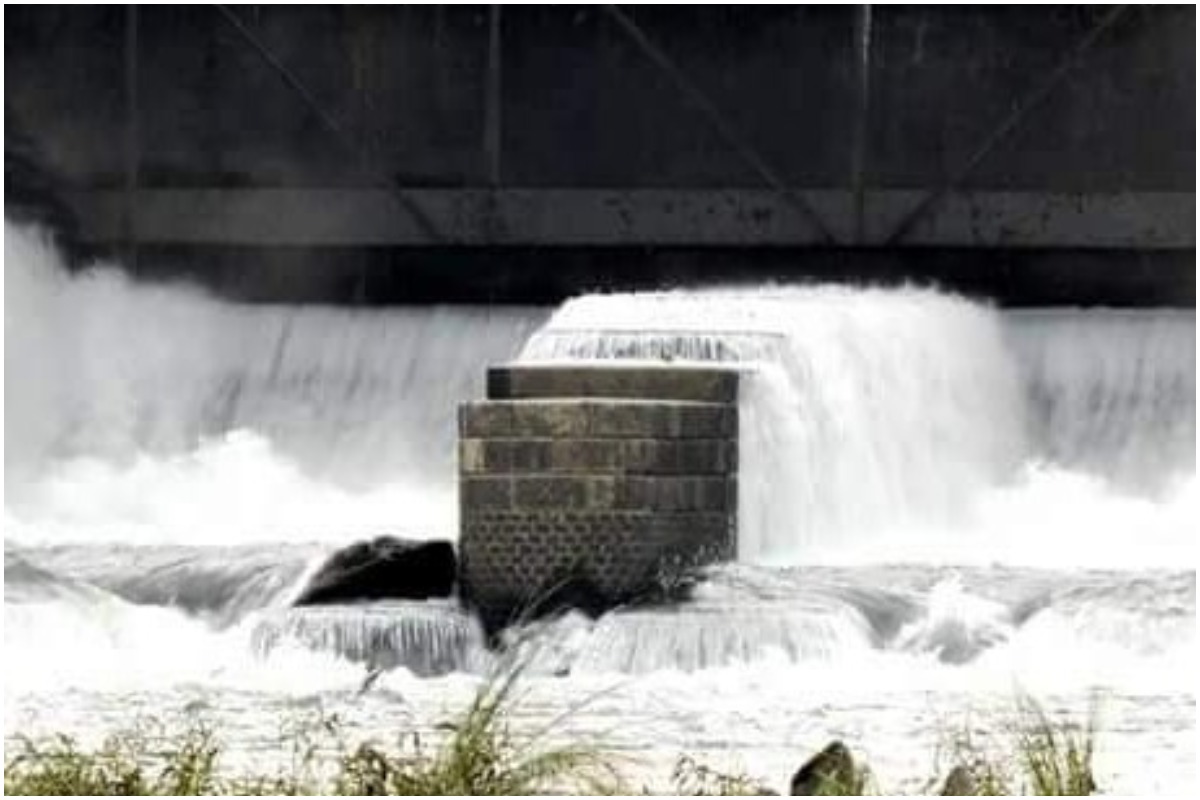
In the lush but flood -prone lowlands of south Bengal, the sound of rushing water is an all-too-familiar harbinger of destruction. With annual monsoons delivering torrential rains to the region, communities brace for floods that submerge farmlands, destroy homes and cut off access to vital resources. It is a ritual of survival, recovery, and loss, a cycle that devastates tens of thousands every year.
At the centre of this crisis stands a controversial infrastructure — the dams built to manage water flow and prevent floods . Dams , long seen as crucial tools in flood management , have come under increasing scrutiny in regions like south Bengal, where the effectiveness of this infrastructure is being hotly debated. While dams were designed to store excess water and prevent downstream flooding , their operations are now being questioned by state officials, experts, and the people who suffer when their rivers break free of control .

The role of dams in south Bengal’s flood management : Help or hindrance? Advertisement The river systems in south Bengal are a maze of natural waterways, vital to both the ecological balance and the livelihoods of millions of residents. Areas like Ghatal, Panskura, Udaynarayanpur, Amta-II and Khanakul are particularly vulnerable, as they lie at the confluence of several rivers that swell during the monsoon season. For generations, these rivers have brought both fertility and disaster, enriching the soil one year, and sweeping away crops and homes the next.
At the heart of the flood management infrastructure in the region is the Damodar Valley Corporation (DVC), which operates a network of dams designed to control water flow and mitigate flooding . These dams — including the Durgapur Barrage and the Kangsabati Barrage — store water during heavy rains and release it in a controlled manner, ideally preventing dangerous floods downstream. However, this system has been called into question by state leaders and environmentalists who argue that poor management , outdated infrastructure, and a lack of coordination have turned these dams into a double-edged sword.
The blame game: DVC and the Bengal government at odds For the people of South Bengal, the floods of 2023 were particularly devastating. Entire communities were submerged, agricultural lands were ruined, and homes were destroyed. In the aftermath, West Bengal chief minister Mamata Banerjee directed her ire at the DVC, accusing the corporation of negligence in managing water releases.
Banerjee claimed that the flooding was “man-made,” the result of a failure to properly coordinate water discharges during periods of heavy rainfall. “The floods in South Bengal this year were not just a natural disaster,” Banerjee stated. “They were caused by the deliberate mismanagement of the DVC.
They released water without consulting us, and now our people are suffering the consequences.” Her accusations ignited a fierce political battle, with the Union Ministry of Jal Shakti defending the DVC’s actions. The ministry argued that the corporation had adhered to all established protocols and had consulted with the Bengal government before releasing water.
The ministry further highlighted that West Bengal had representation on the DVC’s Reservoir Regulation Committee, implying that the state had been involved in the decision-making process it now criticised. Nevertheless, the conflict between the state government and the DVC reflects deeper issues with India’s water management system, particularly in the complex river basins of regions like South Bengal. The science behind flood management : Are dams the solution? Pravat Kumar Shit, an environmentalist, explains that the basic principle behind using dams for flood management is river basin hydrology — maintaining the minimum flow needed to preserve ecological balance and socio-economic sustainability.
Dams , by design, help reduce the frequency and severity of major floods . They hold back excess rainwater, gradually releasing it to downstream areas in a controlled manner. However, Pravat Shit cautions that while dams can mitigate flood risks, they are not a sustainable long-term solution, particularly in large and complex river systems like India’s.
Dams have inherent limitations, especially when they become outdated or when environmental degradation reduces the landscape’s ability to naturally absorb excess water. “The construction of dams in the Damodar Valley has transformed the river’s structure. The river corridor, its hydrological flow pattern, and its capacity to carry water have all been significantly altered,” says Pravat Shit.
“Urbanisation, industrialisation, and deforestation have further weakened the region’s natural defences against floods .” The impact of ageing dams and sedimentation: A growing concern South Bengal’s floods are not just the result of monsoons or mismanagement; they are also linked to the deteriorating condition of India’s dam infrastructure. The Durgapur and Kangsabati Barrages, like many dams in the country, are ageing.
Sedimentation, or the gradual buildup of silt in reservoirs, is a key issue reducing the effectiveness of these dams . Over time, the storage capacity of these dams diminishes, limiting their ability to hold back floodwaters. A recent United Nations study projected that by 2050, sediment buildup will have reduced the storage capacity of over 3,700 large dams in India by 26 per cent.
This is already visible in the Maithon Dam on the Barakar River, which has lost nearly 30 per cent of its storage capacity due to sediment accumulation. Such losses are devastating in regions like south Bengal, where every cubic metre of water held back can mean the difference between flood control and disaster. “Sedimentation is one of the biggest challenges in flood management ,” says Aznarul Islam, a geography professor at Aliah University in Kolkata.
“The more sediment builds up, the less water the dam can hold. And when the reservoirs fill up too quickly, excess water must be released, often leading to floods .” The 2013 Uttarakhand and 2018 Kerala floods : Lessons in dam mismanagement The issue of flawed dam management is not unique to south Bengal.
India has witnessed several flood disasters directly linked to the mismanagement of dams . The 2013 Uttarakhand floods , the multiple floods in the Damodar basin, and the 2018 Kerala floods all highlighted the dangers posed by improper dam operations. In these instances, sudden and massive releases of water overwhelmed downstream areas, catching communities off guard and resulting in widespread devastation.
Unlike natural floods , which often rise gradually, giving people time to evacuate, dam -induced floods strike with little warning. When excess water is suddenly released, the downstream areas are flooded with unprecedented speed, often leading to more damage and loss of life than natural flooding events would cause. Downstream communities: Caught in the crossfire The real victims in this debate are the people who live downstream of these dams .
For them, the annual floods are not just an inconvenience — they are a matter of survival. When the rivers break their banks, entire villages are submerged, and thousands of families are left without homes, food or clean water. Agricultural losses are particularly devastating in these flood -prone areas.
Farmers depend on the monsoon rains to irrigate their fields, but when those rains lead to uncontrolled flooding , crops are destroyed, and families are pushed deeper into poverty. “The situation is becoming unbearable,” says Ashok Mondal, a farmer from Ghatal. “Every year, the floods wipe out our crops, and we are left with nothing.
The government talks about flood control , but we are still waiting for real solutions,” he comments. Climate change and the future of flood management The challenges facing south Bengal are not isolated to this region. Climate change is altering weather patterns across the globe, leading to more erratic and intense rainfall.
In India, this means that the country’s already flood -prone areas are becoming even more vulnerable. The 2023 report from the Intergovernmental Panel on Climate Change (IPCC) warned that global warming is making natural disasters more frequent and severe. In India, the National Flood Commission estimates that over 40 million hectares of land are at risk of flooding , making the country one of the most flood -vulnerable nations in the world.
Experts argue that India needs to rethink its flood management strategy. Instead of relying solely on dams and embankments, the country must explore alternative solutions, such as restoring natural water retention systems like wetlands, reviving local water bodies, and improving drainage systems. Moreover, there is a growing need for better coordination between state and central authorities to ensure that water management decisions are based on scientific data and not political agendas.
The way forward: Collaborative water management and sustainable solutions As south Bengal continues to suffer from annual floods , it is clear that a new approach is needed. Experts emphasise that dams , while important, cannot be the only solution to flood management . Sedimentation, ageing infrastructure and flawed operations have diminished the effectiveness of India’s dams , and climate change is only making matters worse.
Biswajit Bera, a geography professor at Sidho-Kanho-Birsha University in Purulia, points to the growing problem of blocked distributaries and drainage congestion in areas like Howrah and West Midnapore. Unplanned construction along riverbanks and the silting of rivers and canals have exacerbated the flooding problem, leaving downstream communities more vulnerable than ever. “The solution must involve more than just building or maintaining dams ,” says Bera.
“We need to restore the natural capacity of the land to manage water, from improving soil absorption to protecting wetlands and better urban planning. Dams are only part of the puzzle.” Conclusion: Breaking the cycle of floods and political deadlock For the people of south Bengal, the annual flood crisis has become an exhausting cycle of devastation and recovery.
As political leaders engage in blame games and finger-pointing, vulnerable communities remain caught in the crossfire, with no long-term relief in sight. The debate over the role of dams in flood management — particularly the DVC’s operations — underscores a broader issue facing India’s water management system. While dams are essential for controlling water flow, their effectiveness is being diminished by sedimentation, poor coordination and ageing infrastructure.
In the face of climate change and increasingly erratic rainfall patterns, India must embrace more collaborative and sustainable water management strategies to protect its most vulnerable regions. Until then, the people of south Bengal will continue to watch the skies with dread, knowing that each year’s monsoon rains may bring another wave of destruction to their homes and livelihoods. Advertisement.










